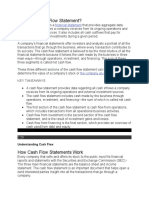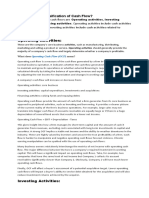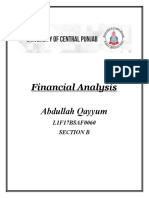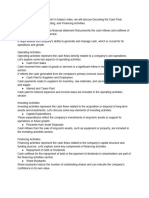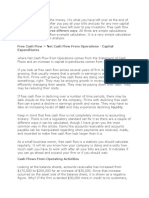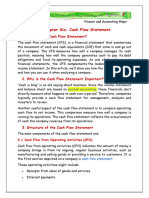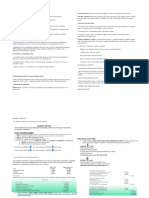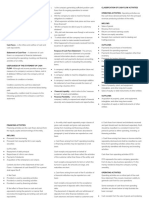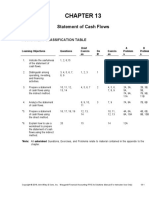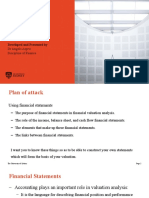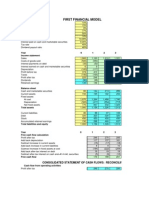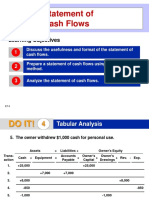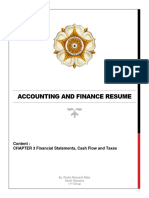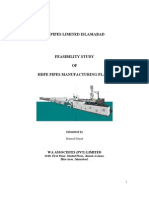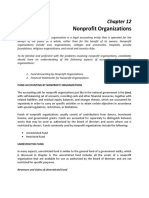0% found this document useful (0 votes)
265 views15 pagesCash Flow Statement Guide
The cash flow statement reveals how cash moves in and out of a business through three sections - operating, investing, and financing activities. It is important because it shows actual cash movement, unlike the income statement and balance sheet. The statement reveals a company's financial health by analyzing trends in operating cash flow over time, as well as cash flows from investing and financing activities. Positive operating cash flows indicate a healthy company, while consistently low operating cash flows could signal trouble.
Uploaded by
Hemal MistryCopyright
© © All Rights Reserved
We take content rights seriously. If you suspect this is your content, claim it here.
Available Formats
Download as PDF, TXT or read online on Scribd
0% found this document useful (0 votes)
265 views15 pagesCash Flow Statement Guide
The cash flow statement reveals how cash moves in and out of a business through three sections - operating, investing, and financing activities. It is important because it shows actual cash movement, unlike the income statement and balance sheet. The statement reveals a company's financial health by analyzing trends in operating cash flow over time, as well as cash flows from investing and financing activities. Positive operating cash flows indicate a healthy company, while consistently low operating cash flows could signal trouble.
Uploaded by
Hemal MistryCopyright
© © All Rights Reserved
We take content rights seriously. If you suspect this is your content, claim it here.
Available Formats
Download as PDF, TXT or read online on Scribd
/ 15
